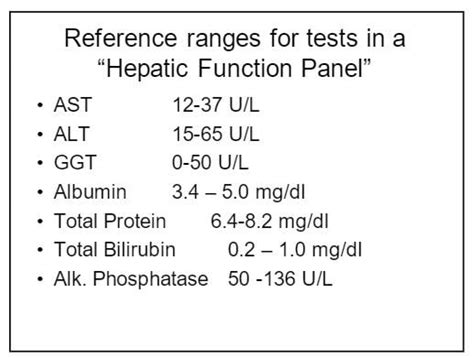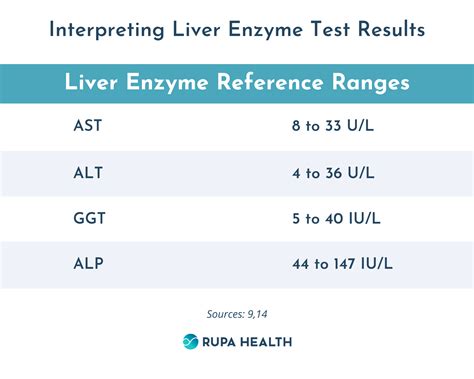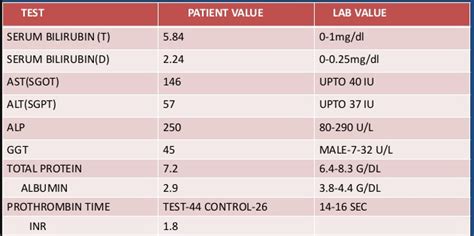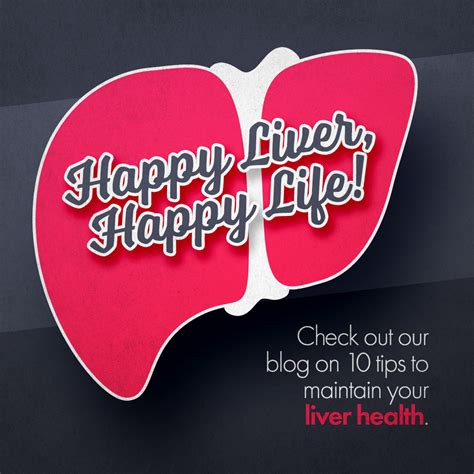Intro
Understand liver health with a Liver Panel Test, assessing liver function, enzyme levels, and bilirubin, to diagnose liver disease, damage, or dysfunction, and guide treatment.
The liver is a vital organ that plays a crucial role in maintaining our overall health. It is responsible for filtering toxins, regulating metabolism, and producing essential proteins. However, liver diseases and disorders can significantly impact our quality of life. One of the most effective ways to diagnose and monitor liver health is through a liver panel test. In this article, we will delve into the importance of liver panel tests, their components, and what the results can indicate about our liver health.
Liver diseases can be asymptomatic, making it challenging to detect them in their early stages. A liver panel test is a comprehensive diagnostic tool that helps healthcare professionals assess liver function and identify potential issues. The test measures various enzymes, proteins, and other substances in the blood to evaluate liver health. It is commonly used to diagnose and monitor conditions such as liver damage, liver disease, and liver cancer.
The liver panel test is a crucial diagnostic tool for individuals who are at risk of liver disease, such as those with a family history of liver disease, heavy drinkers, or people who have been exposed to hepatitis viruses. It is also used to monitor the effectiveness of treatments for liver diseases and to detect any potential side effects of medications that can affect the liver. By understanding the components of a liver panel test and what the results can indicate, individuals can take proactive steps to protect their liver health and prevent potential complications.
Liver Panel Test Components

A liver panel test typically includes several components that measure different aspects of liver function. These components include:
- Alanine transaminase (ALT): an enzyme that helps convert amino acids into energy
- Aspartate transaminase (AST): an enzyme that helps convert amino acids into energy
- Alkaline phosphatase (ALP): an enzyme that helps break down proteins
- Gamma-glutamyl transferase (GGT): an enzyme that helps break down amino acids
- Bilirubin: a pigment produced during the breakdown of red blood cells
- Albumin: a protein produced by the liver that helps regulate fluid balance and transport hormones, vitamins, and drugs
- Total protein: a measure of all proteins in the blood, including albumin and globulins
Each component of the liver panel test provides valuable information about liver health. For example, elevated levels of ALT and AST can indicate liver damage or inflammation, while abnormal levels of ALP and GGT can suggest bile duct obstruction or liver cancer.
Understanding Liver Panel Test Results

Interpreting liver panel test results requires a comprehensive understanding of the individual components and their reference ranges. The reference ranges for each component can vary depending on the laboratory and the individual's age, sex, and medical history. Generally, abnormal results can indicate liver damage, liver disease, or other conditions that affect liver function.
For example, elevated levels of bilirubin can indicate jaundice, a condition characterized by yellowing of the skin and eyes. Abnormal levels of albumin can suggest liver cirrhosis, a condition in which the liver becomes scarred and unable to function properly. By understanding the results of a liver panel test, individuals can work with their healthcare providers to develop a treatment plan and make lifestyle changes to protect their liver health.
Liver Panel Test Result Ranges
The result ranges for each component of the liver panel test can vary depending on the laboratory and the individual's medical history. However, here are some general guidelines: * ALT: 0-40 U/L * AST: 0-40 U/L * ALP: 30-120 U/L * GGT: 0-55 U/L * Bilirubin: 0.1-1.2 mg/dL * Albumin: 3.5-5.5 g/dL * Total protein: 6-8.3 g/dLIt is essential to note that these ranges can vary depending on the laboratory and the individual's medical history. Abnormal results can indicate liver damage, liver disease, or other conditions that affect liver function.
Liver Diseases and Disorders

The liver is susceptible to various diseases and disorders that can significantly impact our quality of life. Some common liver diseases and disorders include:
- Liver cancer: a type of cancer that originates in the liver
- Liver cirrhosis: a condition in which the liver becomes scarred and unable to function properly
- Hepatitis: inflammation of the liver caused by viral infections, alcohol abuse, or other factors
- Fatty liver disease: a condition in which excess fat accumulates in the liver
- Liver failure: a condition in which the liver is unable to function properly, often requiring a liver transplant
Each of these conditions requires prompt medical attention and treatment. A liver panel test can help diagnose and monitor these conditions, enabling individuals to receive timely and effective treatment.
Liver Disease Prevention
Preventing liver diseases and disorders requires a comprehensive approach that includes lifestyle changes, vaccination, and screening. Some ways to prevent liver diseases include: * Practicing safe sex to prevent the transmission of hepatitis viruses * Getting vaccinated against hepatitis A and B * Avoiding excessive alcohol consumption * Maintaining a healthy weight to reduce the risk of fatty liver disease * Avoiding exposure to toxic substances that can damage the liverBy taking proactive steps to protect their liver health, individuals can reduce their risk of developing liver diseases and disorders.
Liver Panel Test Preparation

Preparing for a liver panel test requires some planning and preparation. Here are some tips to help individuals prepare for the test:
- Fasting: individuals may need to fast for 8-12 hours before the test to ensure accurate results
- Medications: individuals should inform their healthcare provider about any medications they are taking, as some medications can affect liver function
- Lifestyle changes: individuals should avoid excessive alcohol consumption and maintain a healthy diet to reduce the risk of liver damage
By following these tips, individuals can ensure accurate and reliable results from their liver panel test.
Liver Panel Test Risks and Side Effects
Like any medical test, a liver panel test carries some risks and side effects. These include: * Pain or bruising at the injection site * Dizziness or lightheadedness * Infection or bleedingHowever, these risks and side effects are generally mild and temporary. Individuals should discuss any concerns or questions they have with their healthcare provider.
Liver Health and Wellness

Maintaining liver health and wellness requires a comprehensive approach that includes lifestyle changes, nutrition, and stress management. Some ways to promote liver health include:
- Eating a healthy diet rich in fruits, vegetables, and whole grains
- Maintaining a healthy weight to reduce the risk of fatty liver disease
- Practicing stress-reducing techniques, such as meditation or yoga
- Getting regular exercise to improve overall health and well-being
By prioritizing liver health and wellness, individuals can reduce their risk of developing liver diseases and disorders.
Liver-Friendly Foods
Some foods can help promote liver health and wellness. These include: * Leafy greens, such as spinach and kale * Cruciferous vegetables, such as broccoli and cauliflower * Berries, such as blueberries and raspberries * Fatty fish, such as salmon and sardines * Whole grains, such as brown rice and quinoaIncorporating these foods into your diet can help support liver health and reduce the risk of liver diseases.
Conclusion and Next Steps

In conclusion, a liver panel test is a valuable diagnostic tool that can help individuals assess their liver health and detect potential issues. By understanding the components of the test, interpreting the results, and taking proactive steps to protect their liver health, individuals can reduce their risk of developing liver diseases and disorders. If you have concerns about your liver health or would like to schedule a liver panel test, consult with your healthcare provider to discuss your options and develop a personalized plan.
We invite you to share your thoughts and experiences with liver panel tests in the comments below. Have you had a liver panel test before? What were your results, and how did you use the information to improve your liver health? Share your story and help others understand the importance of liver health and wellness.
What is a liver panel test?
+A liver panel test is a comprehensive diagnostic tool that measures various enzymes, proteins, and other substances in the blood to evaluate liver health.
What are the components of a liver panel test?
+A liver panel test typically includes several components, such as ALT, AST, ALP, GGT, bilirubin, albumin, and total protein.
What can abnormal liver panel test results indicate?
+Abnormal liver panel test results can indicate liver damage, liver disease, or other conditions that affect liver function, such as liver cancer, liver cirrhosis, or hepatitis.
How can I prepare for a liver panel test?
+To prepare for a liver panel test, individuals should fast for 8-12 hours before the test, inform their healthcare provider about any medications they are taking, and maintain a healthy diet and lifestyle.
What can I do to promote liver health and wellness?
+To promote liver health and wellness, individuals can eat a healthy diet, maintain a healthy weight, practice stress-reducing techniques, and get regular exercise.
